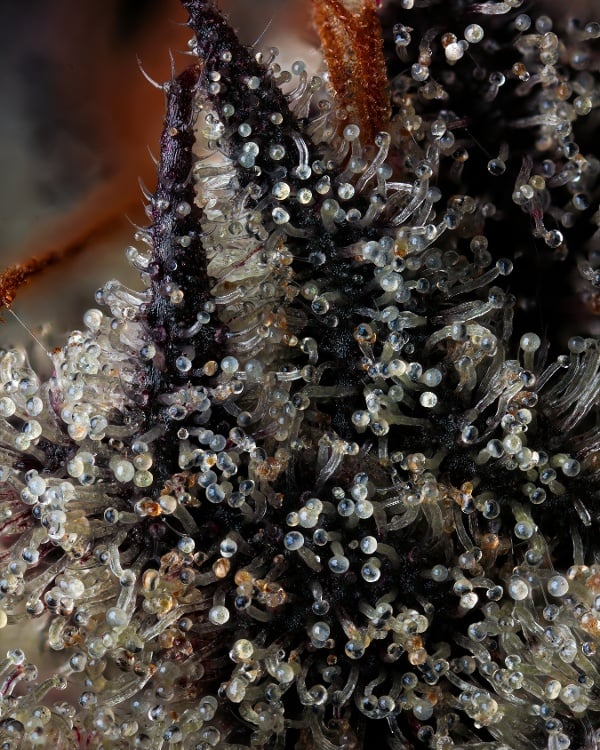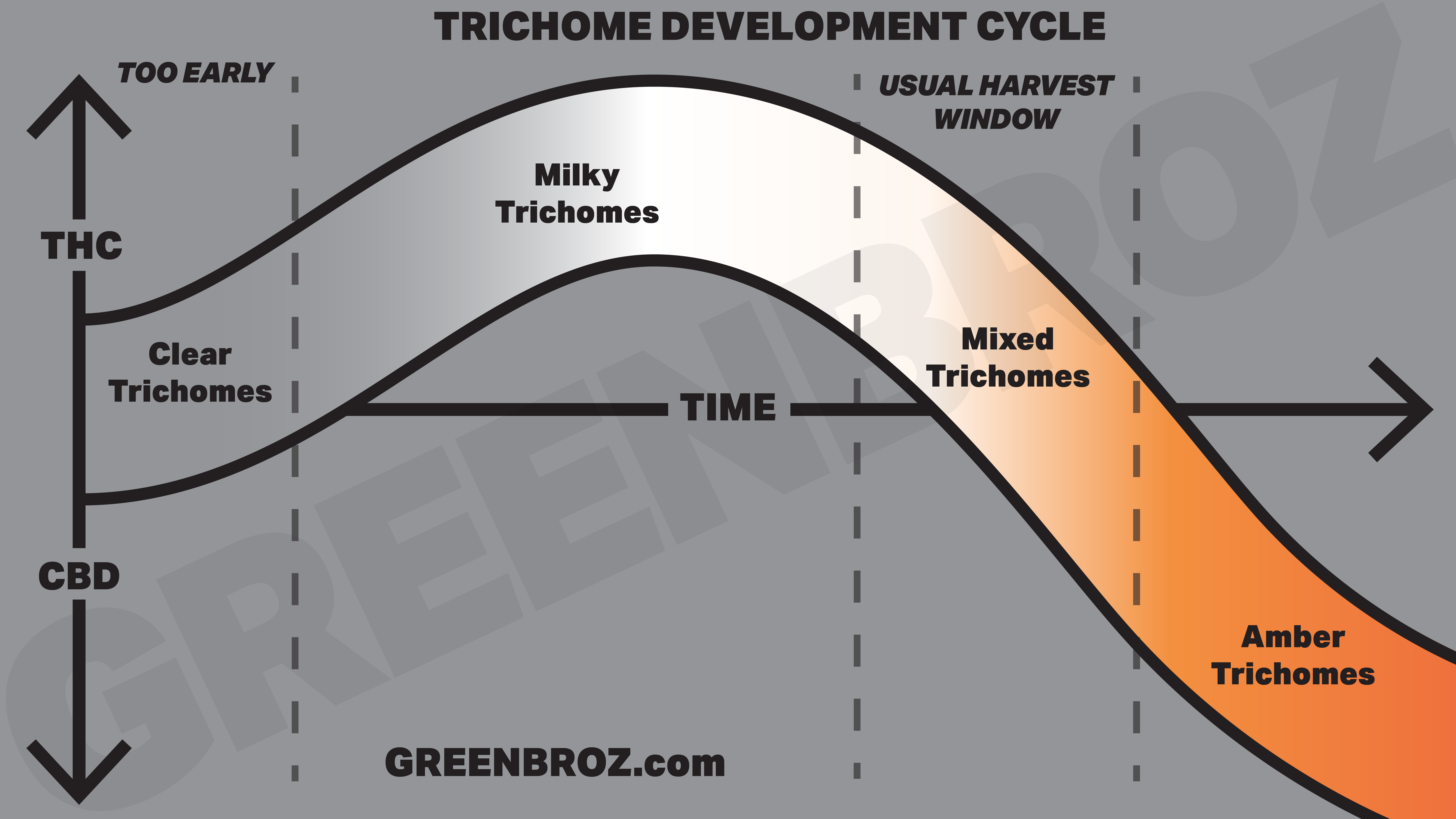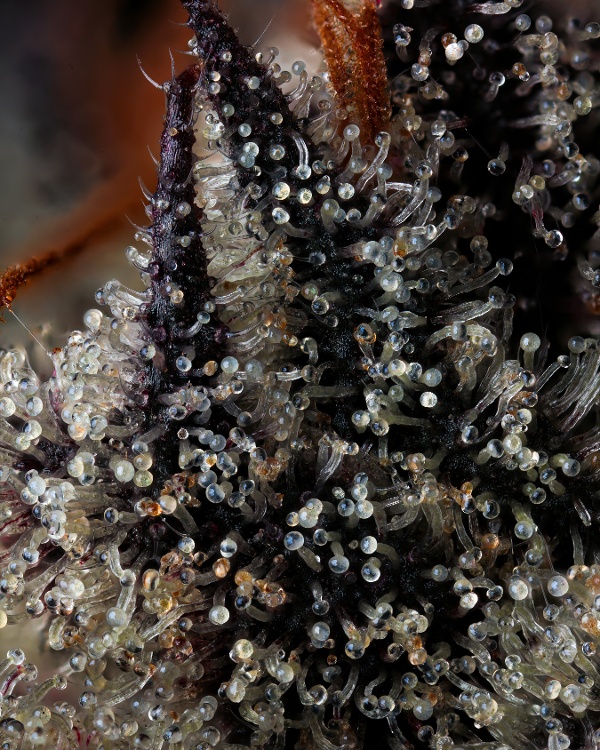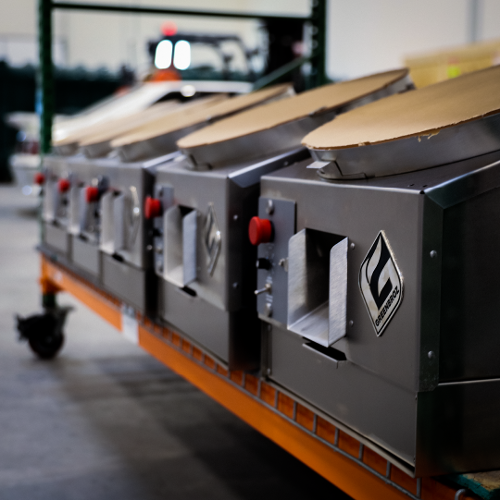The Ultimate Guide to Cannabis Equipment Maintenance
In the world of cannabis cultivation, your equipment is your best friend. Keeping it in pristine condition isn't just about prolonging its lifespan;...

Understanding the trichome development timeline is key to producing high-quality, intentionally balanced experiences for the cannabis consumer. Weed trichomes are the resin glands or sticky outgrowths on the surface of buds, stems, stalks, and leaves of a cannabis plant. The Greek root of the word trichome translates to “growth of hair,” which appropriately describes their fuzzy, hair-like appearance. The cannabis community often calls them "triches" as a shorten version of the full word.
They function as the cannabis plant’s natural defense system and produce and store aromatic terpenes and cannabinoids. These natural chemicals, tetrahydrocannabinol (THC) and cannabidiol (CBD) are largely responsible for the smell and effects of cannabis. At each development stage, the plant will contain different ratios of cannabinoids.
This is why monitoring trichomes on weed is one the best ways to know when a weed plant is ready for harvest and most potent.
Using a microscope during a plant’s flowering process look for mushroom shaped trichomes. Growers can often determine the best time to harvest for designated types of consumer experiences using trichomes. This type of inspection will help the grower to accurately gauge the flowering stage of a cannabis plant.
Take a clipping of a leaf and examine it under a microscope. Under the microscope, they appear like tiny hairs on the surface of the cannabis plant. Weed trichomes can be as small as 10 micrometers and as large as 500 micrometers. Because of their minuscule size its best to observed through a microscope that can magnify between 30 and 120 times.
Growers should focus on the trichomes that resemble the shape of a mushroom. These contain the majority of psychoactive and medicinal compounds that make cannabis such a unique and desirable plant.
Its essential to reference a trichome development cycle chart or harvest chart to best gauge trichome development.
|
|
| Capitate-Stalked Trichomes that are mostly cloudy or milky in color. |
Growers have identified three types of glandular trichomes relevant to plant maturity and chemical balance of cannabis plants. Understanding the nuances of weed trichome types is essential to successful harvests. The three types that growers should focus on are bulbous trichomes, capitate trichomes, and capitate-stalked trichomes.
Evenly distributing across the weed flower, these minuscule bulbs contain little THC. Growers must identify them with a microscope, as they are only 10 to 30 micrometers in size. The trichomes create a crystal-like sheen and stickiness that high-grade cannabis is known for.
Identifying bulbous trichomes involves recognizing their one-cell stalks and gland heads, which swell with plant oil. Some research suggests bulbous marijuana trichomes exist to alert plants of insect intruders and protect the plants from sunburn. Many cultivators use bulbous cannabis trichomes as an early indicator for harvesting.
These weed trichomes are more abundant and slightly larger than bulbous trichomes, measuring between 25 and 100 micrometers. Capitate sessile trichomes are typically only visible with a microscope. Identifying them involves recognizing their mushroom-shaped structure, attached to the plant without a stalk. Capitate sessile trichomes stay usually hidden from direct view on the underside of sugar leaves and fan leaves.
Throughout the cannabis plant's lifecycle, these trichomes consistently produce cannabinoids, albeit at significantly lower levels than capitate-stalked trichomes. These are particularly well-suited for use in edible cannabis products and cannabis-infused liquids. In fact, many cultivators and processors turn their trichomes into profits by separating this variety for edibles.
The largest and most abundant of the trichome development stages. Capitate-stalked trichomes, also resembling mushrooms, feature large bulbs at the head of the stock. Visible to the human eye, these trichomes are predominantly found on the surface of female cannabis plants, outnumbering their male counterparts.
Capitate-stalked trichomes are rarely seen on sugar leaves, fan leaves, or stems and can be up to 500 micrometers in size. As the flowering stage of a cannabis plant progresses, capitate-stalked trichomes dramatically increase in density. Interpreting the maturity of these triches is crucial because they produce the highest quantity of desirable cannabinoids and terpenes.
This chart shows the different trichome development stages from clear to amber.
|
|
| pictures of clear, milky, amber, and mixed trichomes. |
Trichome formation and maturation change the potency and THC/CBD balance of a cannabis plant. To produce top-shelf cannabis products, growers must be aware of the four stages of trichome development. Specifically for use in the medical marijuana industry and medicinal products for health benefits.
During each stage, they change color, which is why a trichome chart is an essential point of reference for new growers. Throughout their development, they'll appear clear, milky, amber, and mixed in color.
Because new flowers can grow on top of each other, flower clusters near a single plant can develop at different stages. Choosing to harvest only the top of a plant can help growers get the most out of their harvest. Cannabis strains such as California Gold, Space Cookies, and Nebula are known for their brilliant trichome development.
Clear trichomes appear first during its transition from the vegetative state into the first week of the flowering process. Under magnification, the trichomes will appear either clear or opaque. During this stage, the plant is still forming THC and is not yet ready for harvest.
Harvesting buds too early in trichome development will produce a faint and potentially uncomfortable consumer experience. However, the appearance of clear trichomes throughout the lifecycle of a cannabis plant is a sign of healthy growth. Because cannabis plants are always forming new trichomes and producing more chemical compounds.
MILKY TRICHOMES
When a trichome begins to appear cloudy, the THC levels are beginning to reach their ideal potency and flavor. In this stage, the plant is not fully matured, resulting in small buds that lack the rich aroma consumers expect. When cloudy trichomes are covering the plant, THC levels are much higher than CBD levels. This means the psychoactive effects of cannabis are most prevalent.
If harvested during this stage, many cultivars will produce a more uplifting experience. Trichomes remain milky for about two weeks during the lifecycle of a cannabis plant. Growers may choose to harvest the buds at this time if they plan to pair the strain with CBD oil.
Trichomes will begin turning amber in conjunction with milky trichomes. A weed plant primarily covered in amber trichomes will exhibit higher levels of CBD. As much of the THC content in the plant material will have naturally converted to cannabinol (CBN). Growers can determine this stage by observing the lack of little white hairs on the bud.
During this stage, the hairs will appear a dark orange or brown color. This often reduces the psychoactive effects of cannabis consumption and creates a much more sedative effect for the consumer. The medical marijuana industry often leans toward cannabis harvested at this stage because of its ability to manage pain and treat insomnia. Many Indica-dominant strains require growers to harvest the buds when at least 60% of the trichomes have turned amber.
For most cannabis harvests, growers look for a certain ratio of cloudy trichomes to amber trichomes. Many expert growers believe that the best time to harvest a plant is when the trichomes are 70 percent cloudy and 30 percent amber. Buds harvested with this ratio of trichome colors are frequently processed in the retail industry to create stimulating and cerebral effects for the recreational consumer.
Cultivating impressive weed trichomes is an essential part of a successful harvest, but they must be protected during processing. Due to there delicate nature, preservation requires delicate handling with a dry-sift, solvent-free trichome extractor that can operate as a stand-alone machine or with the addition of pulverized dry ice — using ‘180 Micron’ screens to provide the highest yield and quality possible to benefit businesses and customers alike.
This graph shows a basic overview of the trichome development cycle.

Here is picture of what your trichomes may look like when the marijuana plant is ready to be harvested. Notice the ratio of cloudy to amber trichomes.

Weed trichome and their coloration continues to be an integral part of determining when to harvest your plants for maximum potency. A full guide on when to harvest can be found here, ultimate guide to cannabis harvesting.
Crystally weed is common term used to describe the appearance of trichomes on weed. Weed trichomes give a marijuana bud a crystal looking effect but are not actually crystals. Weed with crystals is a good sign of healthy development weed plant development.
Both male marijuana plants and female plants contain some trichomes. However, male cannabis plants do not produce the potent THC rich bud or flower. This means the THC content on male plants is much lower since it's found in parts of the plant in lower amounts.
Although female plants produce the cannabis bud and more potent chemicals that cannabis in known for. Growers still need male cannabis plants to pollinate female plants and to produce seeds.
These trichome machines are quick, precise, and cost-efficient; best of all, they turned what used to be a tedious and time-consuming process into the ultimate form of kief extraction. Gone are the days of selling unprocessed trim for a fraction of its worth. Now, cultivators of all sizes have the opportunity to create exquisite, premium-grade hash that melts perfectly for rosin extraction.
The solventless process, which preserves the entire trichome heads, is ideal for creating high-quality cannabis concentrates that retain the full spectrum of cannabinoids, terpenes, and flavonoids. This makes the Alchemist extractor the perfect choice for producing concentrates, extracts, rosin, shatter, wax, or butter.
With the Alchemist, cultivators can choose whether or not to dry sift their trim with a few scoops of pulverized dry ice. Cold temperatures are favored by some growers because they maintain the trim's rigidity, reducing stickiness and minimizing impurities that may pass through the sieves. Additionally, the presence of dry ice makes the stalk of trichomes more brittle, facilitating easier detachment from the plant. As a result, the sifting process becomes faster, leading to a higher yield (more on this).
Your harvest is already high-quality starting material. But with the right techniques, you can produce an even more potent kief. Want a pure concentrate devoid of plant contaminants? A trichome machine all but eliminates human error, allowing cannabis cultivators to create a consistently pure hash.
Another common form of trichome extraction. Bubble hash or ice water hash is similar to dry sift extraction. Only that instead it uses super chilled ice water to extract potent 6 star full melts.
Never miss a blog posting or exclusive shop deal!

In the world of cannabis cultivation, your equipment is your best friend. Keeping it in pristine condition isn't just about prolonging its lifespan;...

In Humboldt County's green expanses, Jonah Carrington is changing the cannabis game with the GreenBroz Model G Precision Grinder. From his Santa...

Cannabis has come a long way, from black market only to decriminalization, and being legalized in one form or another is just about every state. The...